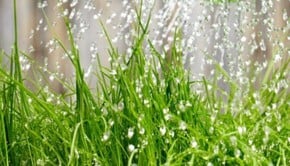Creating Your Own Compost Pile
What Is A Compost Pile?
A compost pile is organic matter that is being decomposed by critters, such as earthworms, to be made into fertilizer that will add nutrients back into the soil. Compost can be used as a soil conditioner or fertilizer in gardens, landscaping, horticulture and agriculture.
Why Should You Compost?
Composting helps minimize the need for chemical fertilizers that may harm the environment. Chemical and granular fertilizers can be swept off sidewalks by rain and carried into our rivers and lakes affecting our water supplies. Composting also helps reduce the use of landfills by using your unwanted food or material as a natural fertilizer. Using your own compost can help you cut back on chemical fertilizers, help the environment and save you money.
Composting Ingredients
- Brown Material: dead leaves, branches, twigs, sawdust, shredded paper, egg shells, pine needles, nut shells, cardboard rolls, and plants that have gone brown.
- Greens Material: grass clippings, cooked or uncooked fruits and vegetables, pulled weeds, grain, hair, fur, tea bags, and coffee grounds.
- Water: Keeping your compost pile moist is important.
Cow, horse, chicken, and rabbit manure may be used in your compost pile. Stay away from dog and cat feces as these could harbor harmful pathogens and diseases.
How Do I Make a Compost Pile?
1) Find a convenient location for your compost pile that won’t get in the way of daily activities.
2) Choose a size for your compost pile. A minimum size of 3x3x3 is needed to generate temperatures that kill weeds and pathogens. Anything over 8 feet will be hard to turn when needed.
3) Start your pile on direct ground, not cement or stones. Place a thin layer of straw or "brown" material on the area you want to create your compost pile. Then, top with a layer of "green" material and moisten with water.
4) Continue adding layers of green and brown material mixed with a small amount of soil and water until the pile is to your desired height.
5) Every couple of weeks or when you add new material, move the center material to the outside of the pile in a method called "turning." This keeps the fresh material mixed with the old material, increasing decomposition.
In a few weeks you should have a layer of soil conditioner in the center of your pile. Use the soil conditioner/fertilizer on your lawn or garden. Start a new compost pile with the remaining material that hasn’t been decomposed yet.
Guidelines to Follow
- Avoid wood when looking for a location for your compost pile. Composting directly against wood can cause decay
- A good compost pile consists of one-third green material and two-thirds brown material. This allows for good aerating for the organisms in your compost pile.
- Animals, rodents and insects could be attracted to pile. Be sure to wear protective clothing and make noise when turning your pile to scare away animals.
- Buying or making a compost bin is a good way to keep your pile confined and deter animals. However, a bin is not necessary for a successful compost pile.
- Meat, bones and fish scraps can attract rodents and unwanted animals, do not use them in your compost pile
- Bury vegetable and fruit scraps a few inches under the surface to deter animals and rodents.
- Covering your compost pile helps retain moisture and heat. Covering also helps your pile from being overwatered by rain.
Following these guidelines will give you a rich, nutrient filled fertilizer that can be used to condition your lawn or garden soil. Making a compost pile has many benefits for the soil, for the environment and even for you!
Featured Parts and Products:






